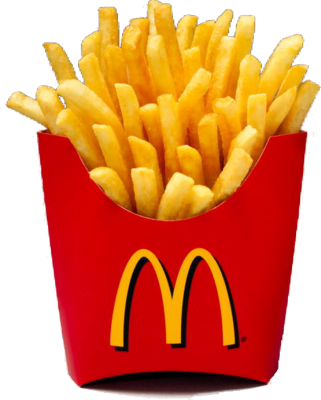Protein is important for a number of reasons:
- Supplies muscles with amino acids needed to repair muscle damage from exercise.
- More satisfying on a per-calorie basis than fat or carbohydrate rich foods.
- Thermic Effect of Feeding is much higher with protein than fat or carbohydrates. This means that your body has to burn more calories to process the protein that you consume than it does for the same amount of carbs or fat.
- Chicken or turkey
- 90% lean ground beef
- Pork tenderloin
- Fish (salmon, swordfish, tilapia, etc)
- Other seafood (mussels, clams, shrimp, crab, etc)
- Low fat cottage cheese
- Greek yogurt
- Wild game (venison, pheasant, elk, moose, buffalo, etc)
- Omega-3 Enriched Eggs
And if you're a vegetarian......
Maybe you'll reconsider?
Rule #2 - Drink two glasses of water with every meal.
Chances are you're not drinking enough water. The human body is made up of approximately 63% water. The benefits of proper hydration are endless, including improved skin and muscle tone, improved circulation, improved cognitive function, decreased fatigue, reduced water retention, and yes, even increased fat loss.
My favorite means for providing clean, cold drinking water.
With all of these benefits, it's easy to see why water is truly the most important nutrient you can consume.
Drinking two glasses of water with every meal will ensure that you are properly hydrated. It will also keep you from overeating because your stomach will be full.
Crystal Light is another good option for those that don't like to drink plain water.
Rule #3 - Eat as many vegetables and fruits as you want with each meal.
Fruits and vegetables should be consumed with every meal. They are nutritionally dense, meaning that for every ounce you are getting a host of vitamins, minerals, antioxidants, and phytonutrients that your body needs to function optimally and ward off disease.
Take your pick!
They are also usually high in fiber. Fiber increases satiety (feeling of fullness) and ensures optimal intestinal function.
Vegetables are not calorically dense at all, which allows you to eat a great volume of food without eating a ton of calories. For example, a pound bag of spinach weighs in with only 100 calories, but it also packs 10 grams of fiber, 100% or more of the USRDA of Vitamin A, C, K, and Iron, and substantial amounts of Calcium and Vitamin E. That is a lot of nutrition for only 100 calories!
Make like this guy and eat your greens!
The caloric damage for my gluttony? About 550 calories for two pounds of high octane nutrition, including 30 grams of fiber and nearly an entire month's worth of antioxidants!
Compare this to a pound of french fries, which weighs in with a whopping 1400 calories and ZERO nutritional value.
This isn't food, it's toxic bullshit.
Legumes are similar to fruits in that they are nutritionally dense and high in fiber, but legumes are a little higher in calories on average. For example, a pound of black beans has approximately 590 calories. But, it also has 32 grams of fiber, and honestly, who the hell can eat a pound of beans? Beans and lentils are very filling and therefore, difficult to overeat. I see no reason to limit their consumption.
Not at fault: beans.
Good examples of fruits and vegetables include:
- Leafy greens (spinach, lettuce, arugula, kale, cabbage)
- Squash (zucchini, yellow squash, eggplant)
- Tree fruits (apples, oranges, cherries, pineapple)
- Berries (blueberries, blackberries, raspberries, strawberries)
- Peppers
- Aromatics (onions, shallots, garlic)
- Tomatoes
- Artichokes
- Carrots
- Cucumbers
- Celery
- Asparagus
- Legumes (beans, lentils)
Rule #4: Eat 1 serving of healthy fats with each meal.
Despite the anti-fat hysteria of the 90s, fats remain an essential part of a nutritious diet. Your diet should actually be comprised of a balance of fats, both saturated and unsaturated. Good sources include:
- Extra virgin olive oil
- Fish oil (available in capsule form; my favorite is Biotest Flameout)
- Flax seed oil
- Avocado
- Nuts and seeds (almonds, cashews, sunflower seeds)
- Omega 3 enriched butter
- Cheese
Good in moderation.
Rule #5: Eat a meal every 3-4 hours.
For those of you who are good at math, you will notice that this equals anywhere from 4-6 meals per day. The benefits of eating smaller meals more frequently are as follows:
- Consistent energy levels. When you eat frequently, your blood sugar stays more stable. Avoiding the constant ups and downs in energy levels allows you to be more productive throughout the day. It also leads to better workouts, which also leads to faster fat loss.
- Stable insulin levels. A big meal will cause a quick increase in blood sugar levels, resulting in a big spike in insulin. Insulin is a storage hormone responsible for shuttling nutrients (especially sugar) to the cells of the body. When it is high, the body is in fat storage mode, not fat burning mode. You want to avoid this mode as much as possible.
- Less hunger. One of the nicest things about eating more frequently...is that you get to eat more frequently! When you get hungry in between meals, you'll know that you have another meal coming up very soon, so you will be less likely to resort to snacking; the worst enemy of fat loss.
7am: breakfast (omelet with onions, peppers, tomato, and feta cheese)
11am: lunch (grilled chicken breast with lemon and garlic, salad with mixed greens, veggies, olive oil and red wine vinegar)
3pm: "second lunch" (low fat cottage cheese with pineapple and raw veggies)
7pm: dinner (grilled salmon fillet with bean salad and steamed asparagus)
This sample meal plan is simple, easy to follow, and won't keep you in the kitchen for hours every day.
So there you have it, 5 simple, easy to follow rules for fat loss success.
Start following them today and in a few months you'll be amazed how much better you look and feel!
Happy. Healthy. HUNGRY!









No comments:
Post a Comment